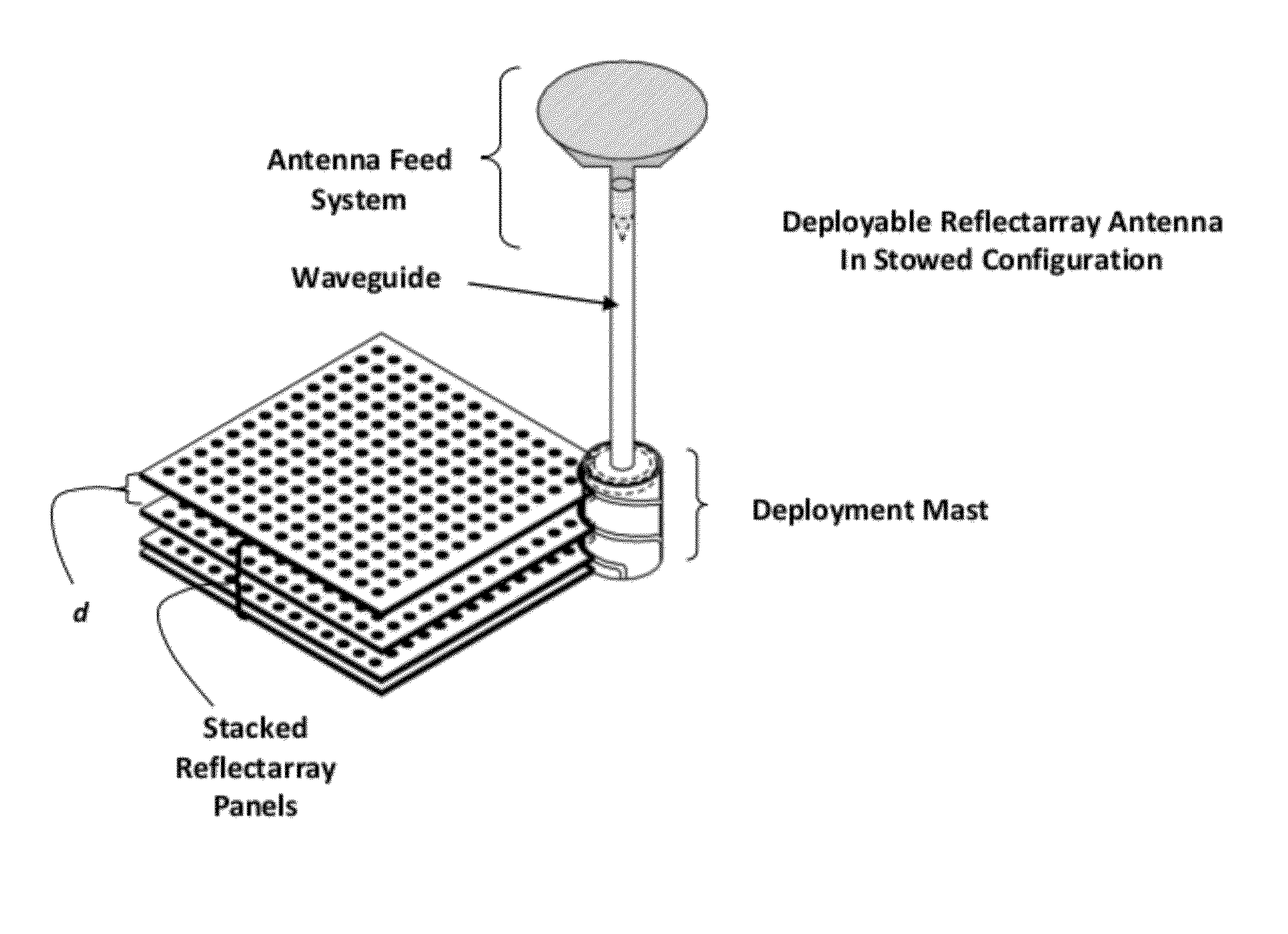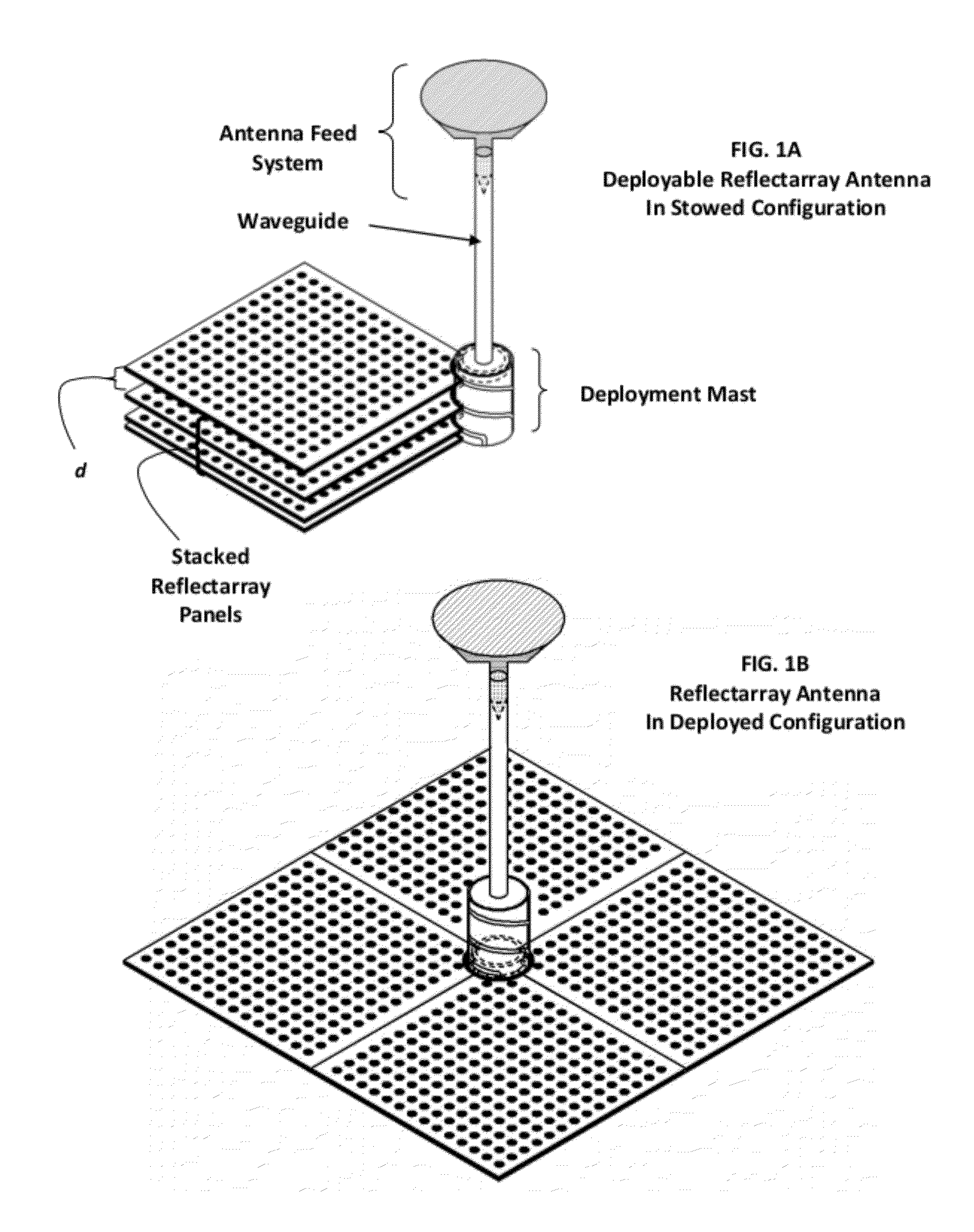Deployable reflectarray antenna system
a technology of reflector antenna and antenna system, which is applied in the direction of collapsible antenna means, space fed arrays, antennas, etc., can solve the problems of increasing undesired side lobes, increasing antenna gain, and increasing antenna surface tolerances. , to achieve the effect of simple but effective deployment mechanism, reducing surface area, and increasing angular displacemen
- Summary
- Abstract
- Description
- Claims
- Application Information
AI Technical Summary
Benefits of technology
Problems solved by technology
Method used
Image
Examples
Embodiment Construction
[0019]A deployable reflectarray antenna system is described that compactly packages a planar reflectarray antenna into a stack of component panels for launch and transportation and subsequently deploys them to a much larger operational antenna configuration that is combined with an integral waveguide and antenna feed. In the FIG. 1 example, four flat reflectarray panels make up the reflectarray antenna. The panels are attached by individual panel mounting brackets in the center area to the deployment mast. FIG. 1A shows the reflectarray antenna system in its stowed configuration occupying the footprint of a single flat panel. The bottom panel is fixedly attached to the bottom the deployment mast and the three movable panels are stacked above the fixed panel and vertically separated by a distance d. FIG. 1B shows the deployed configuration with a large reflective surface formed by the individual panels after being rotated and displaced downward along guide slots to lie in the plane o...
PUM
 Login to View More
Login to View More Abstract
Description
Claims
Application Information
 Login to View More
Login to View More - R&D
- Intellectual Property
- Life Sciences
- Materials
- Tech Scout
- Unparalleled Data Quality
- Higher Quality Content
- 60% Fewer Hallucinations
Browse by: Latest US Patents, China's latest patents, Technical Efficacy Thesaurus, Application Domain, Technology Topic, Popular Technical Reports.
© 2025 PatSnap. All rights reserved.Legal|Privacy policy|Modern Slavery Act Transparency Statement|Sitemap|About US| Contact US: help@patsnap.com



